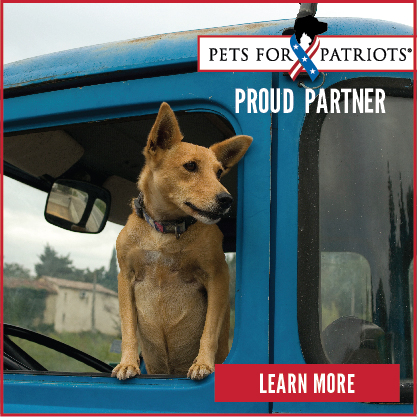The No-Kill Equation
Source: www.nokilladvocacycenter.org
Two decades ago, the concept of a No Kill community was little more than a dream. Today, it is a reality in many cities and counties nationwide and the numbers continue to grow. And the first step is a decision, a commitment to reject kill‐oriented ways of doing business. No Kill starts as an act of will. The next step involves putting in place the infrastructure to save lives.
Following a commitment to No Kill is the need for accountability. Accountability means having clear definitions, a lifesaving plan, and protocols and procedure oriented toward preserving life. But accountability also allows, indeed requires, flexibility. Too many shelters lose sight of this principle, staying rigid with shelter protocols, believing these are engraved in stone. They are not. Protocols are important because they ensure accountability from staff. But protocols without flexibility can have the opposite effect: stifling innovation, causing lives to be needlessly lost, and allowing shelter employees who fail to save lives to hide behind a paper trail.
The decision to end an animal’s life is an extremely serious one, and should always be treated as such. No matter how many animals a shelter kills, each and every animal is an individual, and each deserves individual consideration.
And finally, to meet the challenge that No Kill entails, shelter leadership needs to get the community excited, to energize people for the task at hand. By working with people, implementing lifesaving programs, and treating each life as precious, a shelter can transform a community.
The mandatory programs and services include:
I. Feral Cat TNR Program
Many communities throughout the United States are embracing Trap, Neuter, Release programs (TNR) to improve animal welfare, reduce death rates, and meet obligations to public welfare.
II. High‐Volume, Low‐Cost Spay/Neuter
Low cost, high volume spay/neuter will quickly lead to fewer animals entering the shelter system, allowing more resources to be allocated toward saving lives.
III. Rescue Groups
An adoption or transfer to a rescue group frees up scarce cage and kennel space, reduces expenses for feeding, cleaning, killing, and improves a community’s rate of lifesaving. In an environment of millions of dogs and cats killed in shelters annually, rare is the circumstance in which a rescue group should be denied an animal.
IV. Foster Care
Volunteer foster care is crucial to No Kill. Without it, saving lives is compromised. It is a low cost, and often no cost, way of increasing a shelter’s capacity, improving public relations, increasing a shelter’s public image, rehabilitating sick and injured or behaviorally challenged animals, and saving lives.
V. Comprehensive Adoption Programs
Adoptions are vital to an agency’s lifesaving mission. The quantity and quality of shelter adoptions is in shelter management’s hands, making lifesaving a direct function of shelter policies and practice. In fact, studies show people get their animals from shelters only 20 percent of the time. If shelters better promoted their animals and had adoption programs responsive to the needs of the community, including public access hours for working people, offsite adoptions, adoption incentives, and effective marketing, they could increase the number of homes available and replace killing with adoptions. Contrary to conventional wisdom, shelters can adopt their way out of killing.
VI. Pet Retention
While some of the reasons animals are surrendered to shelters are unavoidable, others can be prevented—but only if shelters are willing to work with people to help them solve their problems. Saving animals requires communities to develop innovative strategies for keeping people and their companion animals together. And the more a community sees its shelters as a place to turn for advice and assistance, the easier this job will be.
VII. Medical and Behavior Programs
In order to meet its commitment to a lifesaving guarantee for all savable animals, shelters need to keep animals happy and healthy and keep animals moving through the system. To do this, shelters must put in place comprehensive vaccination, handling, cleaning, socialization, and care policies before animals get sick and rehabilitative efforts for those who come in sick, injured, unweaned, or traumatized.
VIII. Public Relations/Community Involvement
Increasing adoptions, maximizing donations, recruiting volunteers and partnering with community agencies comes down to one thing: increasing the shelter’s exposure. And that means consistent marketing and public relations. Public relations and marketing are the foundation of all a shelter’s activities and their success. To do all these things well, the shelter must be in the public eye.
IX. Volunteers
Volunteers are a dedicated “army of compassion” and the backbone of a successful No Kill effort. There is never enough staff, never enough dollars to hire more staff, and always more needs than paid human resources. That is where volunteers come in and make the difference between success and failure and, for the animals, life and death.
X. Proactive Redemptions
One of the most overlooked areas for reducing killing in animal control shelters are lost animal reclaims. Sadly, besides having pet owners fill out a lost pet report, very little effort is made in this area of shelter operations. This is unfortunate because doing so—primarily shifting from passive to a more proactive approach—has proven to have a significant impact on lifesaving and allow shelters to return a large percentage of lost animals to their families.
XI. A Compassionate Director
The final element of the No Kill equation is the most important of all, without which all other elements are thwarted—a hard working, compassionate animal control or shelter director not content to regurgitate tired clichés or hide behind the myth of “too many animals, not enough homes.” Unfortunately, this one is also oftentimes the hardest one to demand and find.
But it is clear that No Kill is simply not achievable without rigorous implementation of each and every one of these programs and services. These programs provide the only model which has ever created No Kill communities. It is up to us in the humane movement to demand them of our local shelters, and no longer to settle for illusory excuses and smokescreens shelters often put up in order to avoid implementing them.
Comprehensive Implementation
To succeed fully, however, shelters should not implement the programs piecemeal or in a limited manner. If they are sincere in their desire to stop the killing, animal shelters will implement and expand programs to the point that they replace killing entirely. Combining rigorous, comprehensive implementation of the No Kill Equation with best practices and accountability of staff in cleaning, handling, and care of animals, must be the standard.
In 2004, for example, the Pennsylvania SPCA conducted fewer than 200 free spay/neuter surgeries for the pets of the community’s low‐income population. Shelter leaders can boast of a low‐cost and free spay/neuter program, but 200 surgeries in a city of nearly 1.5 million people, with one in four of them below the federal poverty line, will not impact the numbers of animals entering Philadelphia shelters. By contrast, the San Francisco SPCA, in a city with roughly half the population of Philadelphia, performed approximately 9,000 surgeries a year throughout the late 1990s, roughly 84 percent of them were free.
Similarly, animal control in Austin, Texas allows only employees to participate in its foster care program. The shelter can say it is implementing the programs and services of the No Kill Equation, but it is excluding thousands of animal lovers from participating in the lifesaving effort, seriously limiting how many lives they save.
A shelter committed to No Kill does not send neonatal orphaned kittens into foster care “sometimes,” but rather every time. A shelter committed to No Kill does not merely allow rescue groups access to animals “some of the time”, but every time a legitimate rescue group is willing to take over care and custody of the animal. Indeed, a No Kill shelter actively seeks these groups out and contacts a particular rescue organization whenever an animal meets its criteria.
Shelters must also put forth more effort to reunite lost animals with their families. Traditional shelters do little more than have people fill out lost pet reports. As a result, in a typical shelter, less than two percent of cats and roughly 20 percent of dogs are reclaimed by their families. This is unfortunate because being more proactive and comprehensive would have a significant impact on lifesaving.
Those rare communities who have systematized their approach and become more proactive have more than doubled this rate of redemption. Washoe County Animal Services in Reno, Nevada, for example, returned seven percent of lost cats and 60 percent of lost dogs to their homes in 2007. Given the high per capita intake of animals (which some suggest would evidence high rates of “public irresponsibility”) one would expect the agency to have a very low redemption rate. Instead, it is very near the top in the nation. Why? The shelter is proactive in finding the people who have lost the pets.
Before impounding stray dogs, Washoe County animal control officers check for identification, scan for microchips, knock on doors in the neighborhood where the animal was found, and talk to area residents. They also carry mobile telephones so that they can immediately call the missing animal’s family and facilitate a quick reunion. While this may seem an obvious course of action, it is, unfortunately, uncommon in American shelters–often with tragic outcomes. The more traditional approach is simply to impound any animals found wandering the streets and to transport them immediately to the pound. Once there they can get lost in the system, compete for kennel space with other animals, and are often put to death.
In Washoe County, impound is a last resort. But if animals are impounded, shelter staff is equally as proactive as field officers are in facilitating redemptions. They immediately post to the Web photographs, identifying information, and the location of where the animal was found. People can search for the animals from their computers at home or at work.
These efforts in Washoe County, combined with an over 50 percent increase in the adoption rate in the community thanks to the Nevada Humane Society, has resulted in a 93 percent communitywide rate of shelter lifesaving for dogs and 90 percent for cats year‐to‐date in 2009. The difference between the average community and Washoe County is striking, but even more so because this latter community is still only scratching the surface of what can be accomplished in terms of redemption rates. Some communities in the United States have achieved a nearly 65 percent reclaim rate for stray dogs; even higher rates have been achieved in other countries. The reclaim rate for cats can—and should—match these, rather than remain at deplorably low national averages.
This not only shows how the achievement of a No Kill community is well within our reach, it demonstrates how modernization of shelter practices by bringing them in line with the No Kill Equation can yield dramatic declines in killing virtually overnight.
In short, shelters must take killing off the table for savable animals, and utilize the programs and services of the No Kill Equation not sometimes, not merely when it is convenient or politically expedient to do so, but for every single animal, every single time. A half‐hearted effort isn’t enough. It is primarily the shift from a reactive to proactive orientation and from a casual, ad‐hoc, limited implementation to a comprehensive one, which will lead to the greatest declines in killing, and fix our broken animal shelter system.



